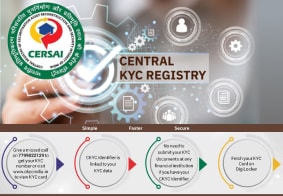CKYC Registry
-
Customer Service Contact us Service request Locate a branch
Find all the help you need
Scan the QR, get our app, and find help on your fingertips

Help CenterSupport topics, Contact us, FAQs and more
-
Login
Are you ready for an upgrade?
Login to the new experience with best features and services
-
Login
Are you ready for an upgrade?
Login to the new experience with best features and services
- Accounts
-
Deposits
IDFC FIRST Bank Deposits
View all Deposits -
Loans
IDFC FIRST Bank Loans
View all Loans - Wealth & Insure
-
Payments
IDFC FIRST Bank Payments
View all Payments -
Cards
IDFC FIRST Bank Cards
View all Cards - Blogs
- Corporate Account
-
Cash Management Services
IDFC FIRST Bank Cash Management Services
View all Cash Management Services - Supply Chain Finance
-
Corporate Lending
IDFC FIRST Bank Lending
View all -
Treasury
IDFC FIRST Bank Treasury
See more details - NBFC Financing
Support topics, Contact us, FAQs and more
- IDFC FIRST Bank Accounts
-
Savings Account
-
Corporate Salary
Account -
Senior Citizens
Savings Account -
First Power
Account -
Current Account
-
NRI Savings
Account -
TASC Institutional
Account -
Savings Account
Interest Calculator
- IDFC FIRST Bank Deposits
-
Fixed Deposit
-
Recurring Deposit
-
NRI Fixed Deposit
-
Safe Deposit Locker
-
FD Calculator
-
RD Calculator
- IDFC FIRST Bank Loans
-
Personal Loan
-
Consumer Durable
Loan -
Home Loan
-
Business Loan
-
Professional Loan
-
Education Loan
-
New Car Loan
-
Pre-owned Car Loan
-
Two Wheeler Loan
-
Pre-owned Two
Wheeler Loan -
Commercial Vehicle
Loan -
Gold Loan
-
Loan Against Property
-
Loan Against Securities
-
Easy Buy EMI card
-
Personal Loan
EMI Calculator -
Education Loan
EMI Calculator -
Home Loan
EMI Calculator
- IDFC FIRST Bank Wealth & Insure
-
FIRST Select
-
FIRST Wealth
-
FIRST Private
-
Mutual Funds
-
Sovereign Gold Bond
-
Demat Account
-
Term Insurance
-
Life Insurance
-
Health Insurance
-
General Insurance
-
Bonds
-
Loan Against
Securities -
Portfolio Management
Service
- IDFC FIRST Bank Payments
-
FASTag
-
Credit Card
Bill Payments -
UPI
-
Funds Transfer
-
Forex Services
-
Pay Loan EMI
- IDFC FIRST Bank Cards
-
Ashva :
Metal Credit Card -
Mayura :
Metal Credit Card -
FIRST Millennia
Credit Card -
FIRST Classic
Credit Card -
FIRST Select
Credit Card -
FIRST Wealth
Credit Card -
FIRST WOW!
Credit Card -
Deals
-
Debit Cards
-
Co-branded Cards
-
Credit Card
EMI Calculator -
FIRST Corporate
Credit Card -
FIRST Purchase
Credit Card -
FIRST Business
Credit Card
- Premium Metal Credit Cards
-
AshvaLifestyle1% Forex₹2,999
-
MayuraLifestyleZero Forex₹5,999
-
FIRST PrivateInvite Only
- Best for travellers
-
MayuraZero ForexMetal₹5,999
-
Ashva1% ForexMetal₹2,999
-
FIRST WOW!Zero ForexTravelLifetime Free
-
FIRST SWYPTravel OffersEMI₹499
-
FIRST Select1.99% ForexLifestyleLifetime Free
-
FIRST Wealth1.5% ForexLifestyleLifetime Free
-
Club VistaraTravelLifestyle₹4,999
-
IndiGo IDFC FIRST Dual Credit CardTravelLifestyle₹4,999
- Max benefits, Free for life
-
FIRST Classic10X RewardsShoppingNever Expiring Rewards
-
FIRST Millennia10X RewardsShoppingNever Expiring Rewards
-
FIRST Select10X RewardsLifestyle1.99% Forex
-
FIRST Wealth10X RewardsLifestyle1.5% Forex
-
FIRST WOW!RewardsTravelZero Forex
-
LIC ClassicRewardsInsuranceShopping
-
LIC SelectRewardsInsuranceShopping
- Reward Multipliers
-
AshvaLifestyleMetal₹2,999
-
MayuraLifestyleZero Forex₹5,999
-
FIRST ClassicNever Expiring RewardsShoppingLifetime Free
-
FIRST MillenniaNever Expiring RewardsShoppingLifetime Free
-
FIRST SelectNever Expiring RewardsLifestyleLifetime Free
-
FIRST WealthNever Expiring RewardsLifestyleLifetime Free
- Rewards & Credit on UPI
-
FIRST Power+FuelUPI₹499
-
FIRST PowerFuelUPI₹199
-
FIRST EA₹NVirtual1% Cashback₹499
-
FIRST DigitalVirtualUPI₹199
-
IndiGo IDFC FIRST Dual Credit CardUPITravelDual cards
- Fuel and Savings
-
FIRST PowerRewardsUPI₹199
-
FIRST Power+RewardsUPI₹499
-
LIC ClassicRewardsInsuranceShopping
-
LIC SelectRewardsInsuranceShopping
- Express and Flaunt
-
AshvaMetal1% Forex₹2,999
-
MayuraMetalZero Forex₹5,999
-
FIRST SWYPEMIOfferMAX₹499
-
FIRST MillenniaRewardsShoppingLifetime Free
- FD Backed rewarding Credit Cards for all
-
FIRST EA₹NVirtualCashback₹499
-
FIRST WOW!Zero ForexTravelLifetime Free
-
CreditPro Balance TransferTransfer & SaveReduce InterestPay Smartly
- IDFC FIRST Bank NRI Forex Solutions
-
Send money to India-Wire transfer
-
Send money to India-Digitally
-
Send money abroad
-
Max Returns FD (INR)
- IDFC FIRST Bank MSME Accounts
-
Platinum Current
Account -
Gold
Current Account -
Silver Plus
Current Account -
Merchant Multiplier
Account -
Agri Multiplier
Account -
TASC Institutional
Account -
Dynamic Current
Account -
World business
Account -
First Startup
Current Account
- IDFC FIRST Bank Business Loans
-
Business Loan
-
Professional Loan
-
Loan Against Property
-
Business Loan for Women
-
Working Capital Loan
-
Construction Equipment Loan
-
Machinery Loan
-
Healthcare Equipment Loan
- IDFC FIRST Bank Business Solutions
-
Payment Solutions
-
Tax Payments
-
Doorstep Banking
-
Point of Sale (POS)
-
Escrow Accounts
-
NACH
-
Payment Gateway
-
UPI
-
Virtual Accounts
-
As per amendment in the Income Tax Rules, PAN or Aadhaar are to be mandatorily quoted for cash deposit or withdrawal aggregating to Rupees twenty lakhs or more in a FY. Please update your PAN or Aadhaar. Kindly reach out to the Bank’s contact center on 1800 10 888 or visit the nearest IDFC FIRST Bank branch for further queries.
-
-
Most Searched
Sorry!
We couldn’t find ‘’ in our website
Here is what you can do :
- Try checking the spelling and search
- Search from below suggestions instead
- Widen your search & try a more generic keyword
Suggested
Get a Credit Card
Enjoy Zero Charges on All Commonly Used Savings Account Services
Open Account Now
The term mortgage was first defined by the Transfer of Property Act, of 1882. In many ways, borrowing money against land or having to give up on your home due to a deep burden of loans has been in practice since times immemorial. Animals, farmlands, precious goods – everything was once considered property you could loan against based on local rules and regulations, or the lack thereof.
Over the decades, the world of finance and banking has regularised loans against properties and mortgage loans. Let’s take a look at two primary categories of mortgage loans:
READ MORE
What is the meaning of a mortgage?
A mortgage, in simple terms, is a financial arrangement that helps you buy a home when you don't have enough money to pay for it all at once. It's like a long-term loan specifically for purchasing property. Here's how it works:
You find a home you want to buy, but you can't afford to pay the full price upfront. So, you approach a bank or a mortgage lender. They agree to lend you the money you need to buy the house, and in return, you promise to pay it back over a long period, often 25 to 30 years.
This borrowed money is called the 'mortgage loan'. You agree to make regular payments to repay the loan, and these payments cover both the loan amount and interest. The house you buy serves as collateral, meaning if you can't make your payments, the lender could take the house back.
Once you've repaid the loan in full, you own the house outright. Mortgages make homeownership possible for many people by spreading the cost over time, but it's essential to choose one that aligns with your finances.
However, it can get a bit more complicated when the conditions of the loan are decided completely by the mortgagor and the mortgagee without the involvement of any third party or even government body. That’s where the term “equitable mortgage” comes into play. The word equity stands for “in the interest of justice” in this context. Let us understand more about equitable mortgage.
What is an equitable mortgage?
An equitable mortgage is a legal arrangement where a borrower offers their property as security for a loan without transferring ownership to the lender. In this type of mortgage, the lender holds an equitable interest in the property, giving it the right to sell it if the borrower fails to repay the loan.
Equitable mortgages are often used when a formal mortgage deed cannot be executed immediately, providing a temporary solution for borrowers in need of funds while protecting the lender's interests in the property. It's a safeguarded way to obtain a loan using property as collateral without a formal mortgage deed.
Importance of understanding an equitable mortgage
Understanding equitable mortgages is crucial because it safeguards both borrowers and lenders in property transactions. For borrowers, it allows them to secure loans using their property as collateral without giving up ownership. This can be a lifeline during financial needs. For lenders, it ensures they have a legal claim to the property if the borrower defaults, reducing the risk of losing their investment. Proper comprehension of equitable mortgages helps in making informed financial decisions and ensures that property transactions are conducted fairly and legally. It's like a safety net, providing financial support while preserving property ownership rights and legal protections for both parties involved.
What is a registered mortgage?
A registered mortgage is a legal agreement where a borrower uses their property as collateral for a loan, and this arrangement is officially recorded with a government authority, typically a land registry. By registering the mortgage, both the borrower and lender establish a public record of their interests in the property. This protects the lender's rights in case of non-payment and ensures transparency in property transactions. It also prevents the property from being sold or transferred without the lender's knowledge, offering a secure way to provide loans based on property while maintaining legal clarity and protection for all parties involved.
Key differences between an equitable mortgage and registered mortgage
Here are the notable differences between equitable mortgage and registered mortgage:
Equitable mortgage:
- Formal documentation: Equitable mortgages are based on an informal agreement and do not require a formal mortgage deed.
- Registration: They are not registered with a government authority like a land registry, making them less visible to the public.
- Proof of loan: Often relies on oral or written agreements as proof of the loan's existence.
- Enforcement: In case of default, the lender's claim to the property may be more challenging to prove and enforce in court.
- Visibility: Typically, only the parties involved in the mortgage are aware of its existence.
- Risk: There may be a higher risk for lenders, as the mortgage may not offer the same level of legal protection and clarity as a registered mortgage.
- Common usage: Equitable mortgages are commonly used when a formal mortgage deed cannot be executed immediately, providing a temporary solution.
Registered mortgage:
- Formal documentation: Requires a formal mortgage deed signed by both parties, with all terms and conditions clearly specified.
- Registration: Must be officially registered with a government authority, such as a land registry, creating a public record of the mortgage.
- Proof of loan: The mortgage deed itself serves as concrete proof of the loan's existence and terms.
- Enforcement: In case of default, the lender has a well-documented and legally enforceable claim to the property.
- Visibility: Easily visible to the public, potential buyers, and other interested parties, providing transparency.
- Risk: Offers lenders greater legal protection and a clearer path for property repossession in case of non-payment.
Common usage: Registered mortgages are the standard in property transactions, providing security and legal clarity for both borrowers and lenders.
Conclusion
The distinction between equitable mortgages and registered mortgages is significant in the world of property financing. Equitable mortgages offer flexibility and a temporary solution, often relying on informal agreements, but they come with a higher level of risk and fewer legal protections.
On the other hand, registered mortgages provide a structured and secure framework for both borrowers and lenders. They are transparent, legally enforceable, and widely accepted in property transactions. Choosing between the two depends on individual circumstances, but understanding these differences is essential for making informed decisions in real estate and financial matters.
Have other questions regarding the terms and conditions to avail a Loan Against Property? We’ve answered a whole bunch of queries here.
Disclaimer
The contents of this article/infographic/picture/video are meant solely for information purposes. The contents are generic in nature and for informational purposes only. It is not a substitute for specific advice in your own circumstances. The information is subject to updation, completion, revision, verification and amendment and the same may change materially. The information is not intended for distribution or use by any person in any jurisdiction where such distribution or use would be contrary to law or regulation or would subject IDFC FIRST Bank or its affiliates to any licensing or registration requirements. IDFC FIRST Bank shall not be responsible for any direct/indirect loss or liability incurred by the reader for taking any financial decisions based on the contents and information mentioned. Please consult your financial advisor before making any financial decision.
The features, benefits and offers mentioned in the article are applicable as on the day of publication of this blog and is subject to change without notice. The contents herein are also subject to other product specific terms and conditions and any third party terms and conditions, as applicable. Please refer our website www.idfcfirstbank.com for latest updates.























